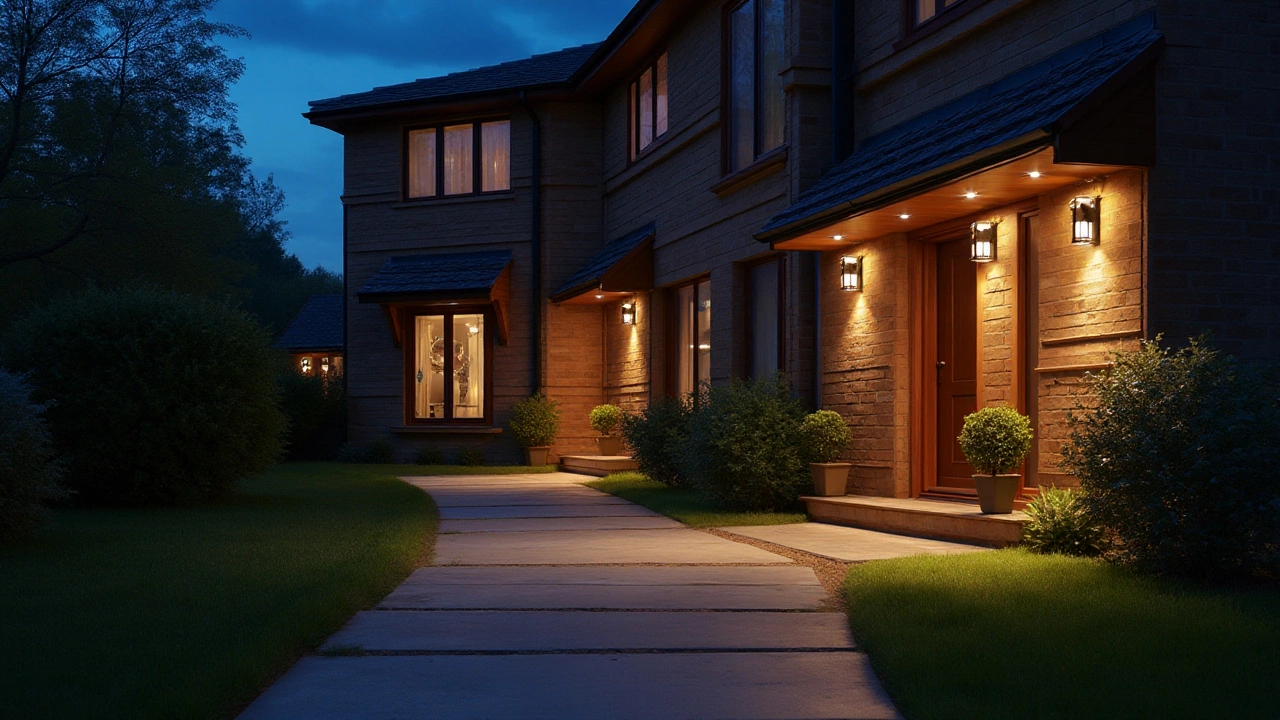Ever wonder how a motion detector knows when someone’s walking by or why a door sensor rings when the door opens? It’s all thanks to sensor technology – tiny devices that turn physical changes into alerts you can act on. In a world where burglars get smarter, sensors give you the edge by spotting threats fast and sending the info straight to your phone or monitor.
At its core, a sensor is a piece of hardware that senses something – motion, heat, light, glass break, you name it – and converts that into an electronic signal. That signal travels to a control panel or cloud service, which decides whether to trigger an alarm, start a recording, or simply log the event. Common security sensors include PIR (passive infrared) motion detectors, door/window contacts, glass‑break microphones, and even vibration sensors that can detect a forced entry.
What makes today’s sensors stand out is their ability to talk wirelessly and work with smart home platforms. Your security camera can now see a motion event from a sensor and start recording automatically, while your phone gets a push notification in real time. The result? Faster response, fewer false alarms, and a system that feels truly connected.
First, map out the entry points. Doors and windows need contact sensors that alert you as soon as they open. For larger open areas like a garage or backyard, a PIR motion sensor with a wide detection zone works best. If you’re worried about glass break, add a dedicated glass‑break sensor – they listen for the specific frequency of shattering glass.
Next, think about power. Battery‑operated sensors are easy to install and keep working during power cuts, but you’ll need to change the batteries every 1‑2 years. Wired sensors draw power from your home’s electricity and often integrate directly into a hard‑wired alarm system, which can be more reliable for commercial sites.
Finally, consider integration. Sensors that support Z‑Wave, Zigbee, or Wi‑Fi can plug straight into a hub like Total Security Solutions’ monitoring console. That way, a motion event can trigger a floodlight, lock a door, or start a live video feed without you lifting a finger.
When you pick sensors, look for certifications like EN 50131 (European security standard) and check the range – a sensor that only covers a few feet isn’t useful for a big garden. Also, read user reviews; real‑world performance often tells you more than specs.
Maintenance is simple: test each sensor monthly using the “test” button, replace batteries as soon as you get a low‑battery alert, and keep the lenses clean from dust or spider webs. A clean sensor equals accurate detection.
Putting it all together, a layered sensor approach gives you the best protection. Door contacts catch the first entry, motion detectors spot movement inside, and glass‑break sensors cover the silent threat of forced windows. Pair them with a reliable monitoring service, and you get 24/7 eyes on your property.
Ready to upgrade? Total Security Solutions can audit your current setup, recommend the right sensor mix, and handle professional installation. With the right sensor technology, you’ll sleep better knowing every door, window, and movement is being watched – and you’ll be the first to know if something’s wrong.

Delve into the world of motion sensor lights, examining why they have become a staple in modern home security and convenience. Learn which brands and models stand out and what features are making waves in 2025. Discover some intriguing tidbits about the evolution of sensor technology and get practical tips for selecting and installing motion sensor lights in various settings.